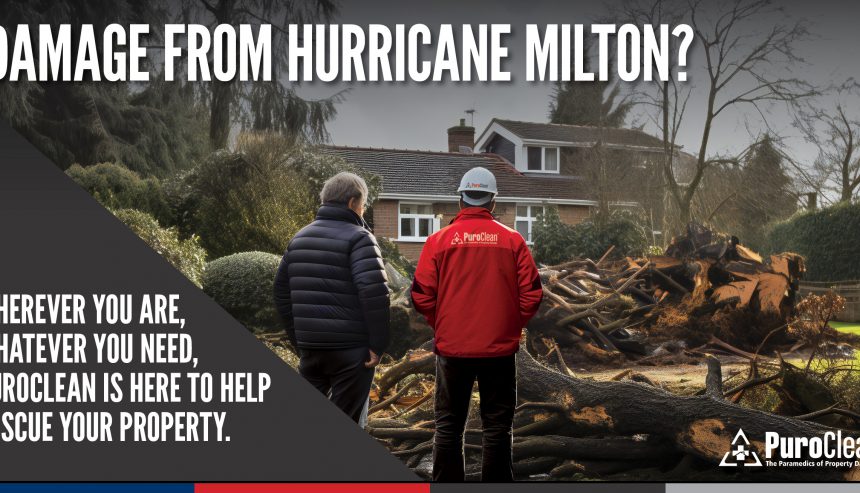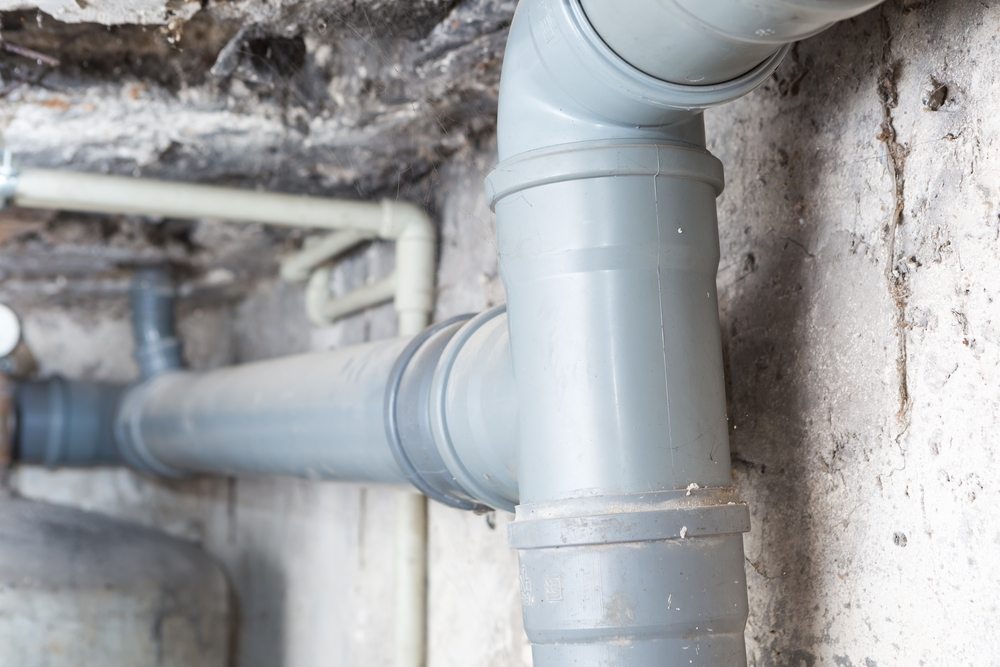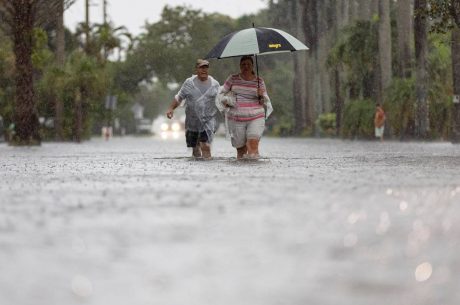In the wake of Hurricane Helene, Florida residents are grappling with extensive damage caused by the powerful Category 4 storm. Making landfall on Thursday night (Sept 26, 2024) over Florida’s Big Bend, the hurricane brought life-threatening storm surges, destructive winds, and torrential rainfall. Although Helene quickly weakened as it raced inland, downgrading to a tropical storm by Friday morning (Sept 27, 2024), the destruction it left behind is severe, and homeowners across the state are now focused on restoring their properties. With more than 2 million people without power and widespread flooding, it’s crucial to take immediate steps to begin the restoration process.

Restoring Damaged Properties After Hurricane Helene’s Damage
In this guide, we’ll walk you through the key steps for restoring your home or business after a hurricane, focusing on the damage caused by Hurricane Helene.
1. Assessing the Damage
The first step after any hurricane is assessing the extent of the damage. Hurricane Helene caused widespread destruction, with wind gusts reaching up to 140 mph and severe flooding across Florida’s Gulf Coast. Here’s what to look for:
- Roof Damage: High winds can tear off shingles, expose roofs, or even collapse entire sections.
- Water Intrusion: Flooding from storm surges can lead to water seeping into homes, causing mold growth, structural damage, and ruined furniture.
- Broken Windows and Doors: Flying debris can easily break windows and doors, leaving homes vulnerable to further weather damage.
- Electrical Issues: Power outages has affected over 1.2 million customers in Florida at this present moment, according to CBSnews. Downed power lines or electrical surges may cause additional hazards.
It’s important to take photos and videos of all visible damage for insurance purposes before moving on to cleanup.
2. Safety First: What to Do Before Cleanup
Safety is a priority after any major storm. Before beginning restoration, ensure your home is safe to enter:
- Turn off the Electricity: If your home has been flooded, do not enter until the power has been turned off to avoid electrocution.
- Wear Protective Gear: Floodwaters can carry harmful bacteria and debris, so wear gloves, boots, and protective clothing when surveying your property.
- Avoid Standing Water: Floodwaters from Helene can contain sewage or hazardous chemicals. Avoid contact until professionals assess the situation.
3. Water Damage Restoration and Mold Prevention
Flooding from Hurricane Helene has left many homes in Florida with severe water damage. This is particularly dangerous because it can lead to mold growth, which poses health risks and further weakens the structure of your home. Here’s how to start the water damage restoration process:
- Remove Water Quickly: Use pumps, vacuums, or towels to remove standing water as soon as it’s safe to enter the property.
- Dry the Area: Ventilate the space by opening windows and using fans. If dehumidifiers are used, ensure to close the windows to speed up the drying process. This is crucial to prevent mold from setting in.
- Inspect for Mold: If mold has started growing, call a professional mold remediation service to assess the extent and safely remove it. Even small amounts of mold can cause long-term health issues.
- Remove and Dispose of Damaged Items: Waterlogged items like carpets, furniture, and drywall may need to be removed and replaced. Be sure to document any disposals for insurance claims.
4. Structural Repairs
The high winds from Hurricane Helene have likely caused significant structural damage, especially to roofs, siding, and foundations. Here’s how to approach structural repairs:
- Roof Repairs: If your roof has sustained damage, contact a professional contractor as soon as possible to prevent further water intrusion.
- Window and Door Replacements: Broken windows and doors should be boarded up temporarily to prevent additional weather damage. Permanent replacements can then be arranged.
- Foundation Checks: If your home experienced severe flooding, the foundation may have shifted or cracked. It’s important to hire a structural engineer to inspect and repair any damage to your home’s foundation.
5. Electrical and HVAC System Restoration
Floodwaters and high winds can severely impact electrical wiring and HVAC systems:
- Electrical Repairs: Contact a licensed electrician to inspect your electrical system before turning the power back on. Floodwaters may have caused dangerous electrical shorts or corrosion.
- HVAC Inspection: Your heating and cooling system could be contaminated by floodwater, making it unsafe to use. Have a professional inspect and repair your system if necessary.
6. Handling Insurance Claims
After the initial shock of Hurricane Helene, the restoration process can feel overwhelming, but your homeowners’ insurance can help cover much of the cost. Here’s how to navigate the claims process:
Work with Your Adjuster: An insurance adjuster will likely inspect the damage before approving your claim. Ensure they have full access to your property to assess the situation thoroughly.
Document Everything: Take photos and videos of the damage before cleaning up or making repairs. Keep receipts of any emergency repairs you make to prevent further damage.
File a Claim Promptly: Contact your insurance company as soon as possible to start the claims process. Be prepared to provide details about the damage and submit your documentation.
Why Professional Restoration is Key
Restoring your home after a hurricane is not just about fixing visible damage. Hidden issues such as mold, electrical problems, and structural weakening can create long-term risks.
Here are reasons why you should hire us for professional property restoration:
- Expertise in Flood and Storm Damage: Our team has the experience and tools to identify and repair even hidden damage.
- Faster Recovery: With the help of our restoration team, your home can be repaired more quickly, minimizing the time you spend displaced.
- Mold Remediation: Mold can develop within 24-48 hours of water damage. Our professional restoration services will ensure that your home is safe and mold-free.
- Insurance Assistance: We can work directly with your insurance provider, helping you navigate the claims process and get repairs started sooner.
Restoring Damage in Melbourne, Florida: Hurricane Helene
Hurricane Helene has left behind devastating damage in Florida, specifically in the Tampa and Tallahassee areas. While the storm has passed, the danger isn’t over. Floodwaters, downed trees, and structural damage are still major risks to homes and businesses. The key to a successful recovery is acting quickly, ensuring safety, and trusting in professional restoration services to help you rebuild.
If you or your loved ones are in Tampa, Tallahassee, or surrounding areas, now is the time to act! Waiting can lead to more severe damage or health risks from mold and contamination.
If your property has been affected by Hurricane Helene in Tampa and Tallahassee areas, call us today on +1 305 894-4343 for water damage and storm damage restoration services. We specialize in storm and water damage repairs and are here to help you restore your home and your peace of mind.
Call PuroClean Today for Your Water Damage Restoration Needs
PuroClean’s property restoration experts are available 24/7 to help with fire damage, water damage restoration, mold remediation, biohazard cleanups, and more. As the “Paramedics of Property Damage®,” we are the first responders of property restoration, providing emergency service when you truly need it. We assist both residential and commercial clients. To schedule an appointment with the PuroClean of Melbourne office, please visit our website or call us at (321) 378-2400.



